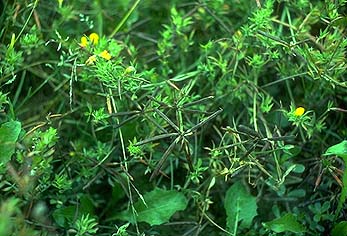Plants Poisonous To Cattle Australia
Indole alkaloids alstonine echitamine alstonidine and reserpine. Several plants including nightshade become more toxic as they wilt and die posing a danger to horses eating dried hay or plant matter blown into their pastures.

Pin On Poisonous Plants Source: www.pinterest.com
This is also the circumstance which leads to poisoning by the native tobaccos Nicotianaspecies.

Plants poisonous to cattle australia. Death camas Zigadenus spp is the common name of several species of plants that are poisonous to livestock. This includes poisoning by toxic plants. Paula Parker an emergency vet and president of the Australian Veterinary Association believes many dogs may come across a poisonous plant out of curiosity or just sheer boredom.
Green cestrum buds flowers and fruit. In the absence of a drought or seasonal feed shortage any dramatic change in animal condition should be investigated as a possible disease. Stock travelling on foot are most at risk.
But Aboriginals used to eat it. LARKSPUR Two types of wild delphinium are poisonous to cattle. Common comfrey Symphytum officinale - along with other members of the borage family which include a number of major weeds in southern Australia - can poison cattle and sheep.
Pokeweed Phytolacca americana southern Ontario only waste areas. It blooms in early spring and is most poisonous when young. Sheep or horses can develop brain damage if they eat too much Nardoo Marsilea drummondii - it destroys vitamin B1.
Unknown possibly saportins narcotic alkaloids or glycosides. 16 rows The plant is poisonous containing cardiostimulant compounds such as adonidin and. These can cause serious illness and even death in some cases.
Ellangowan poison bush Myoporum deserti is one of a number of plants in Australia native and exotic which cause severe liver damage to cattle and sheep. Plants Poisonous to Horses. Its therefore important to check the safety of any plants before giving your pets access to them.
The University of Illinois Veterinary Medicine Library has a good database of plants toxic to animals including photos and detailed description of the effects of the plants on animals. The more toxic of these species are grassy death camas Z. A number of plants are poisonous to pets.
Any plants that have been over-fertilized with nitrogen. Gramineus meadow death camas Z. Poultry cattle humans goats.
Some poisonings by toxic plants have highly visible consequences while others remain unapparent for weeks or months. Examples of potentially toxic plants grazed by livestock in Australia include. Symptoms are slow to develop.
In addition to checking grazing areas for bad plants for cattle some other management steps can reduce poisoning risk. The risk of animals becoming ill during the fall is increased as many plants slow their growth in preparation for winter and equines begin to browse on the remaining plants. An Australian Field Guide.
If you think your pet has ingested a toxic plant it may be a medical emergency. You can find a list of dangerous plants here. 124 rows Not clearly identified.
Parts Poisonous Primary Poisons Aconitum spp. Paniculatus and Nuttalls death camas Z. Symptoms occur two or more hours after plants are eaten.
Venenosus foothill death camas Z. Low larkspur 6-24 inches high has deep blue to purple flowers growing in dry to moderately moist soil on plains foothills and mountains. Marsh Marigold Caltha palustris.

Plants Toxic To Dogs Plants Toxic To Dogs Dogs And Kids Dog Facts Source: www.pinterest.com

Be Aware Of Toxic Plants And Their Impact On Livestock The Land Nsw Source: www.theland.com.au

Edible And Poisonous Plants For Goats Liberty Homestead Farm Poisonous Plants Goats Goat Farming Source: www.pinterest.com

Gorgeous But Deadly 13 Unassuming Poisonous Plants Webecoist Poisonous Plants Ornamental Plants Delphinium Source: www.pinterest.com

Plants Poisonous To Livestock Animal Science Cornell University Source: poisonousplants.ansci.cornell.edu

Plants Poisonous To Livestock Animal Science Cornell University Source: poisonousplants.ansci.cornell.edu
